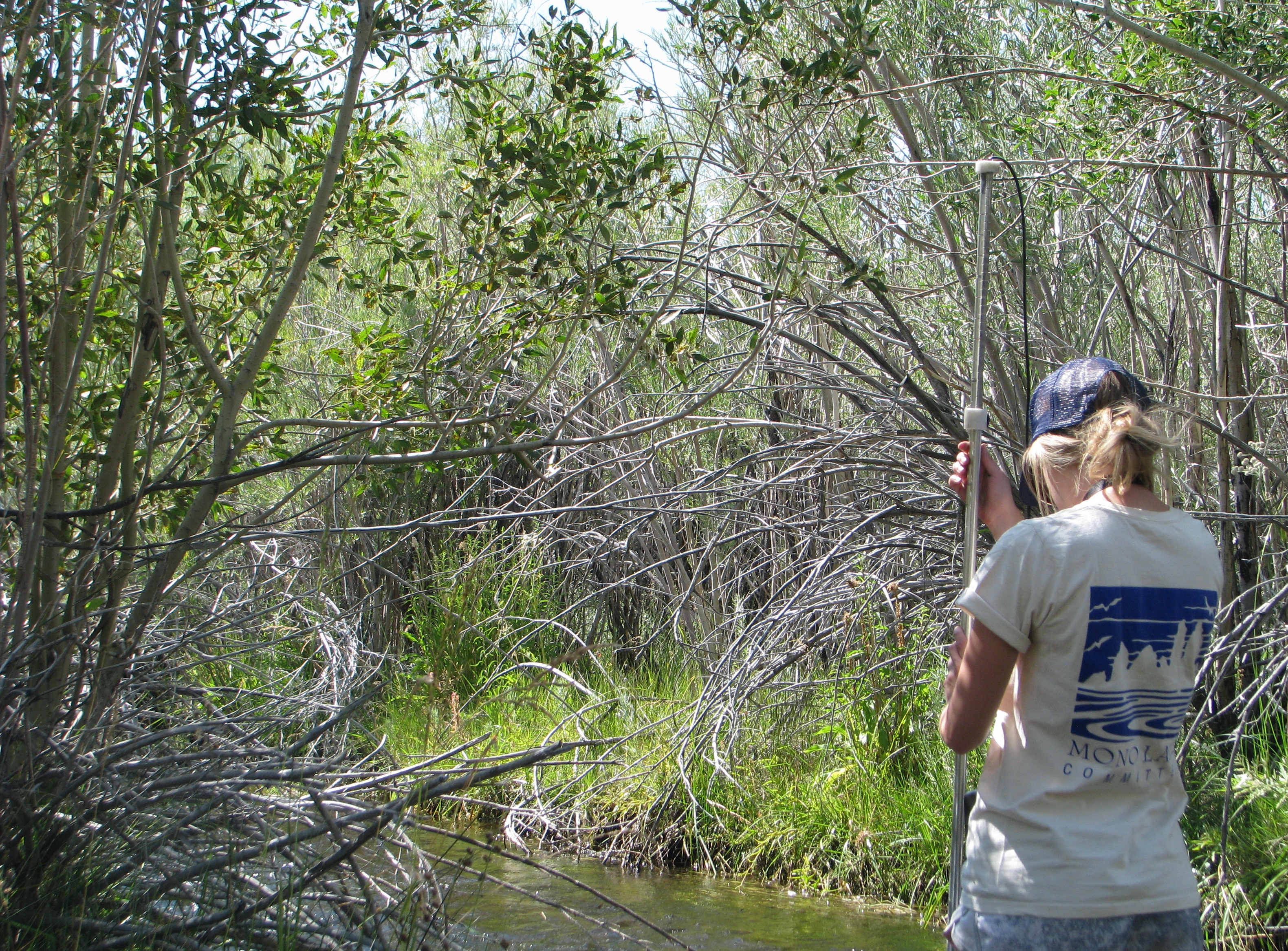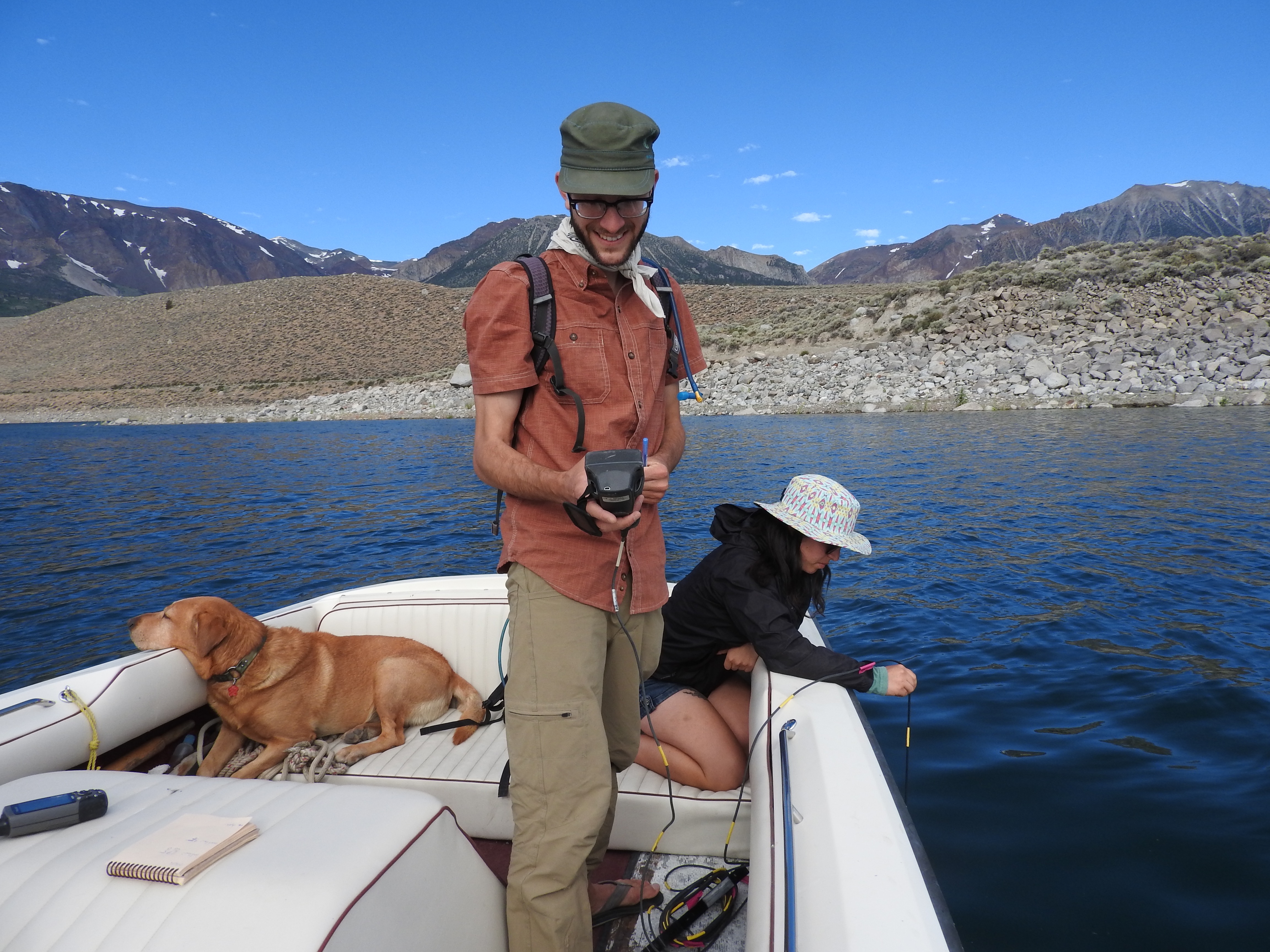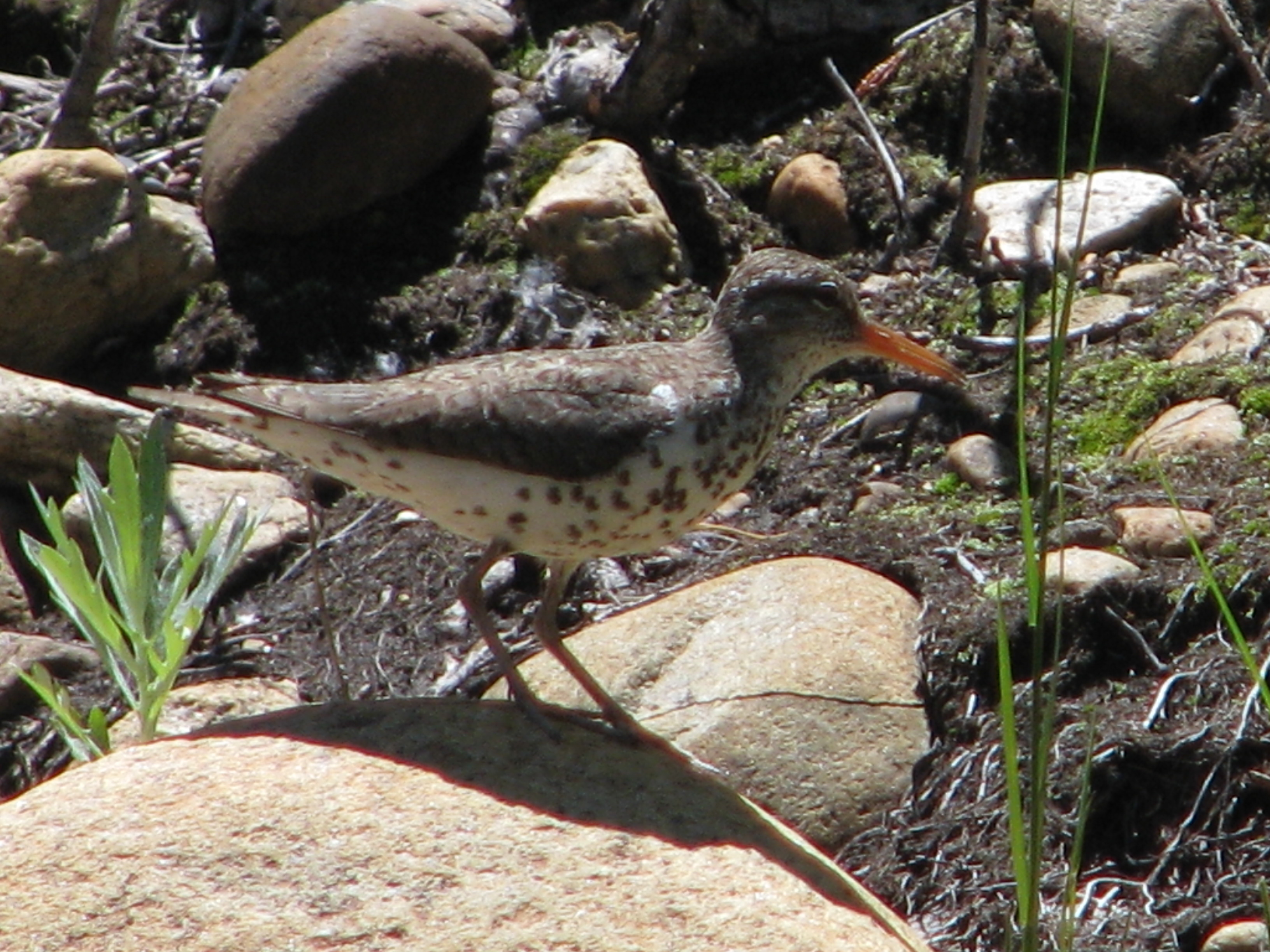
Over the last two years working for the Mono Lake Committee, I have been collecting a variety of hydrologic data in the Mono Basin and it’s been really inspiring to see how this data leads to real and positive changes for Mono Lake. By measuring streamflows, water table depths, and most recently water temperatures, the Committee is able to use scientific evidence to suggest management actions.

Last summer was the first year of our Grant Lake Reservoir monitoring program, which measured temperature and dissolved oxygen throughout the water column at key locations of the reservoir. This data—when compared to well-defined dissolved oxygen and temperature tolerances of trout—provided a lot of insight into how current flow regimes were affecting a very low Grant Lake Reservoir and an already drought-stressed Rush Creek. After the data was analyzed, and with consultation from stream scientist Ross Taylor, a report was finalized and distributed to the State Water Board and all interested parties. These findings will help shape future management plans for Grant and its stream network.

This year the Mono Lake Committee is continuing the Grant monitoring program with an added component. In an effort to better understand how current flow management practices impact water temperatures (and thereby fish health), 13 temperature recording devices have been deployed in the Lee Vining, Rush, Parker, and Walker creeks. These devices called HOBOs (presumably because they are easy to relocate) have been recording stream temperatures at hourly intervals at many different reaches of the creeks. The data from the HOBOs allows us to verify previous assumptions about how to best manage flows.

This data has never been recorded before and while there is an immediate science and policy application, if collection continues it could provide insight into long-term temperature trends, something that is especially relevant in the face of climate change and historic drought. As long as the Mono Lake Committee exists, data acquisitions like this will continue in order to better manage Mono Lake and its tributary streams. I’m glad to be a part of such an endeavor.


Wow, there is always something new to do.
Thanks, Robbie for all your work.
Thanks for this fascinating and informative article. Your time commitment and energy needed for such an important data collection process are inspirational. Many thanks.